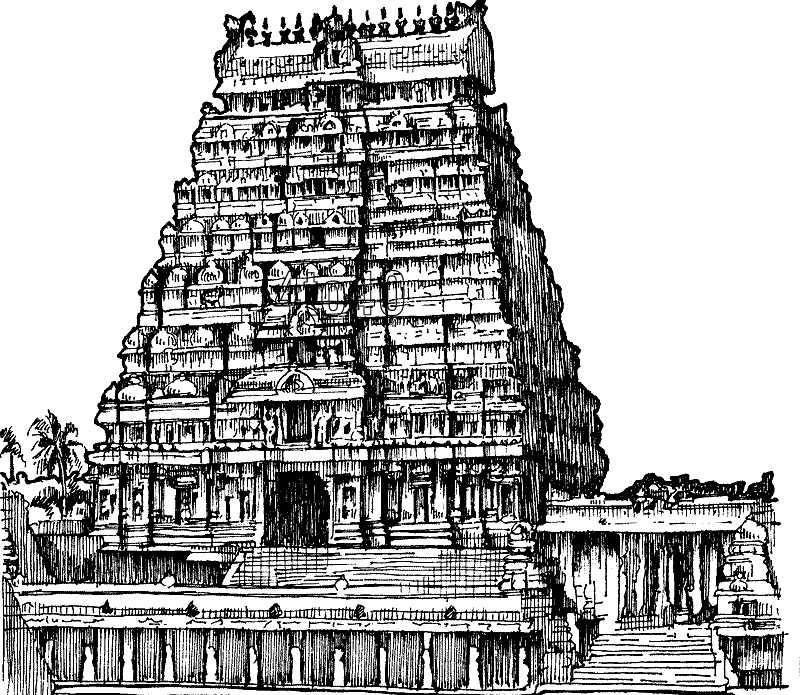
VARAHA AVATARAM
- S Subramaniam
- Apr 20
- 3 min read
Updated: Apr 21

by S.Subramaniam
द्वितीयं तु भवायास्य रसातलगतां महीम् । उद्धरिष्यन्नुपादत्त यज्ञेशः सौकरं वपुः ॥
The above lines are from Varaha Slokam and it can be best interpreted as:
For the welfare of this world, Maha Vishnu, the Lord of Yagnas, took the form of a boar (Varaha) and lifted the Earth (Bhu Devi), and fetched her back when she was abducted by demon Hiranyaksha and taken to Rasatala (the Nether World).
By the way, according to the Hindu scriptures, there are 14 worlds (lokas) seven (Bhu, Bhuvar, Swarga, Mahar, Jana, Tapo and Satya - names that form part of the Pranayama Mantra) are called upper worlds and seven (Atala, Vitala, Sutala, Rasatala, Mahatala, Talatala and Patala) are called lower (nether) worlds. Hiranyaksha had abducted Bhu Devi and hidden her in the Rasatala.
In the above verse the word सौकरं Saukaram has been used to refer to a wild boar.
Varaha, the third of the ten - Dasha Avatars oh Maha Vishnu, is special in the sense that Bhagavan took the Varaha avatar, not just once (like the other eight avatars) but several times, each time associating himself with a different purpose and with a different legend. Let's look at some of them.
1.Varaha Avatar to eliminate demon Hiranyaksha.
As mentioned above, Maha Vishnu took the Varaha avatar to punish and eliminate demon Hiranyaksha (elder brother of Hiranyakashipu) who had wrongfully abducted Bhu Devi and taken her to the nether world. Maha Vishnu took Varaha avatar to kill the demon (read: grant him Liberation / Mukti) and bring back Bhu Devi.
2.Varaha Avatar to trace Lord Shiva’s feet
Chapter 15 of Rudra Samhita of Shiva Maha Puranam explains why Maha Vishnu took the Varaha avatar to trace the bottom (feet) of Rudra, in a competition with Brahma who took the form of a Swan in search of the head of the Lord.
गमनेऽधो वराहस्य गतिर्भवति निश्चला।। धृतं वाराष्हरूपं हि विष्णुना वनचारिणा॥
A boar can steadily go down deep below, therefore Lord Maha Visnu took the form of a wild boar.
3.Varaha Avatar to Father Narakasura
In the view of some scholars Narakasura was born as a result of a physical contact when Varaha brought back Bhu Devi. But according to Kalki Puranam, it's a separate avatar where the Lord is called Adi Varaha. A certain demon had sought a boon from Brahma that he be born as a child of Maha Vishnu and his consort. Granted. His next demand was immortality. Brahma refuses and tells those who are born ought to die one day. Then he seeks a boon that he can be killed only by his parents. Brahma grants him the boon. That's why Maha Vishnu took the Varaha avatar and together with Bhu Devi fathers the son Narakasura and later, as Krishna and Satyabhama, the couple destroy him.
4.Varaha avatar to impart knowledge to Lord Brahma.
Before the beginning of this Kalpa (equal to 4.32 billion years) Brahma offers prayers to Maha Vishnu to impart knowledge to him. Maha Vishnu takes the form a white boar and gives Upadesam to Brahma. That's why the present Kalpa, first of the thirty listed Kalpas, gets its name Sweta Varaha Kalpa.
5.Varaha avatar to impart knowledge to Sage Ribhu
Sage Ribhu is a revered figure in Hindu scriptures, known for his profound wisdom and spiritual insights. He is considered the teacher of Nidagha, a key figure in the Ribhu Gita forming part of the Shiva Rahasya Purana.
Sage Ribhu performed penance for a long time and sought as a boon from Maha Vishnu to impart knowledge about Arman, Tattva and Jivamukti. Maha Vishnu is believed to have taken the form of a boar - Varaha and the conversation between the sage and Varaha has come to be known as the Varaha Upanishad.
हरिः ॐ ॥ अथ ऋभुर्वै महामुनिर्देवमानेन द्वादशवत्सरं तपश्चचार । तदवसाने वराहरूपी भगवान्प्रादुरभूत् ।
Varaha Upanishad forms part of Krishna Yajur Veda and is listed as the 98th of the 108 Upanishads in the anthology by Henry Thomas Colebrooke. However, in the anthology of known Upanishads published in the 17th Century by Dara Shikoh, son of Shah Jahan and elder brother of Aurangzeb there is no mention of this Upanishad.
Renowned Religious scholar Damal Ramakrishnan further mentions how Varaha is worshipped in different forms in different temples. In Tirupati, Lord Srinivasa is His tenant and Varaha is worshiped as the Kshetra Adipati. At the Srimushnam temple, he appears in two forms as Bhu Varaha as Moolavar and Yagna Varaha as the Utsavar. At Mamallapuram he is worshiped as Gnana Varaha, the dispenser of wisdom and at Tiruvidandhai, devotees take home after offering garland to Laksmi Varaha seeking blessings to get married soon.
Let's wind up our reading on Varaha Avatar by chanting the Varaha Gayathri
ॐ भूवराहया विद्महे हिरण्यगर्भाय धीमहि
तन्नो क्रोध प्रचोदयात् ||




Comments